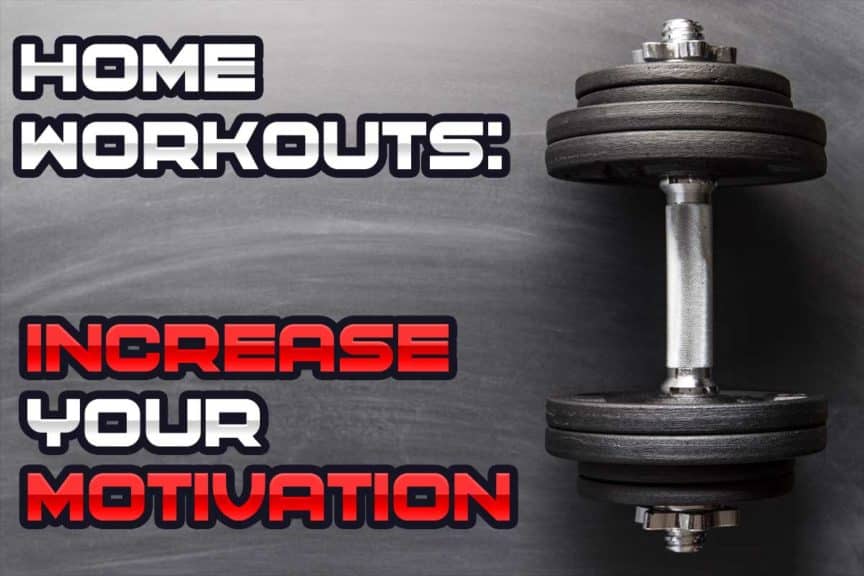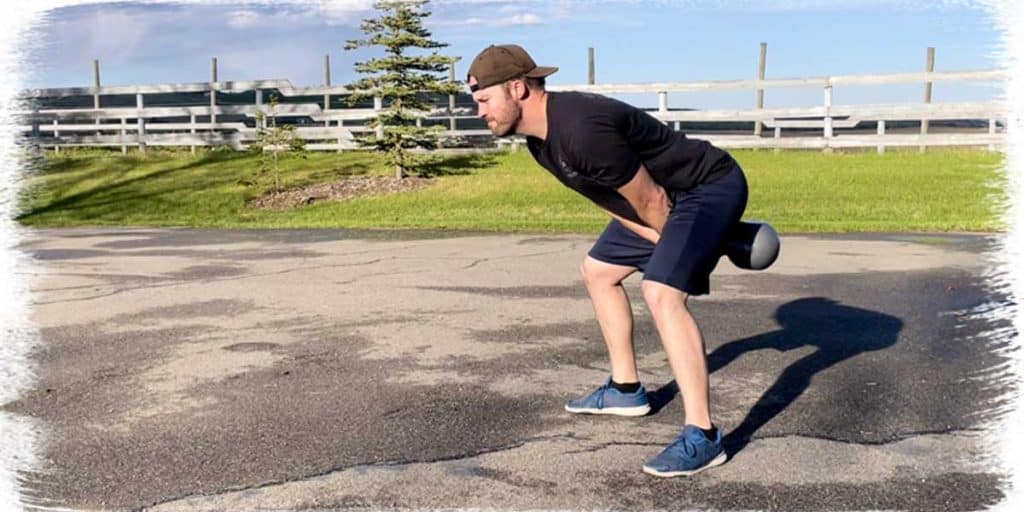I absolutely love working out – I’ve been going to gyms since I was in early high school. To me, few things are better than going to one of my favorite gyms and getting a great session in, one in which I leave the gym feeling like I’ve challenged my body in ways that will make it stronger and healthier.
I can’t stand working out at home.
…thanks, Covid.
To motivate yourself to workout at home, you need to explore why you’re not motivated, avoid “all or none” thinking with your routine, get through the ten-minute barrier and have a single go-to exercise if all else fails. These steps will ensure maximal success for committing to home workouts.
If you want to know all the exact details about how to motivate yourself for home workouts, keep on reading!
ARTICLE OVERVIEW (QUICK LINKS)
The following bullet points are quick links – simply click/tap on any of them to instantly jump to that specific section of the article.
Tip 1: Ask yourself why you’re not motivated (the five whys)
Tip 2: Avoid “all or none” thinking
Tip 3: Commit to the first ten minutes (the ten-minute barrier)
Tip 4: Have an enjoyable, go-to exercise if all else fails
Bonus: The one super quick strategy you have zero excuse for
Related article: The Plan: How to Get Back into Running Again After Gaining Weight
Yes, even the dedicated physical therapist and strength & conditioning specialist that I am doesn’t like working out at home. It’s just not the same. And if you can relate in ANY way, then I’ve got you covered within this article.
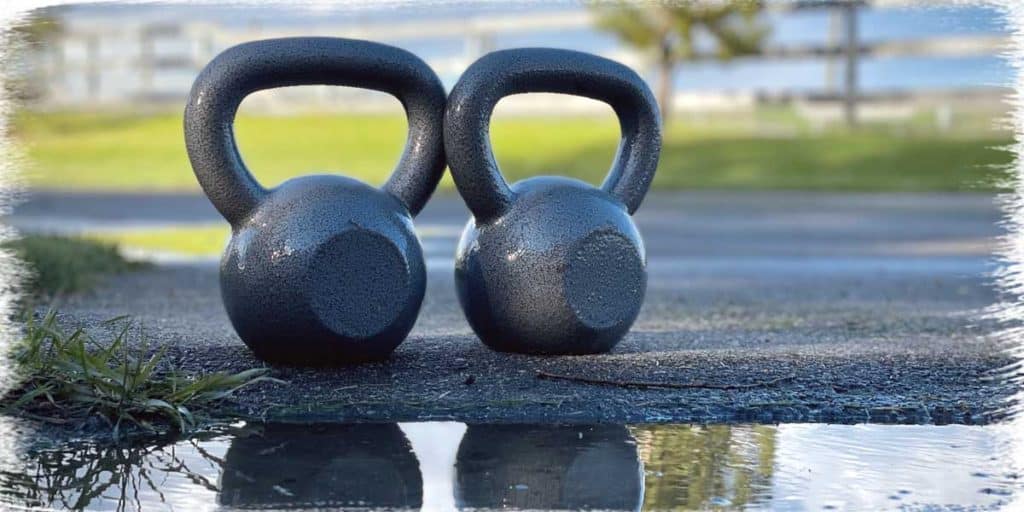
Despite my loathing of working out at home, I still do it thanks to the strategies that I’m able to employ, which improve my motivation. Having been working out for a couple of decades now, I have a pretty good understanding of why so many of us struggle with home workout routines. And thankfully, I have some great tips to share when it comes to breaking down some of the biggest barriers that hold people back on their home fitness regimens.
So, let’s look at each tip in greater detail to help you out with your home workout motivation!
Tip 1: Ask yourself why you’re not motivated
If you just can’t find the motivation to workout at home, a good starting point for getting rid of the issue is asking yourself “why?” followed by taking some time to explore the answer.
A GREAT way to do this is to ask yourself, “why?” Five times, with each “why” being asked to the previous answer that you provided.
This is often known as the “five whys” and is a great way to start understanding what holds you or me back from an issue such as lacking motivation for working out at home (or working out in general).
In my desire to help you out as much as possible, I’ll share my own questions and answers in regards to my struggles with motivation for home workouts so that you can see what the process looks like:
Q: Why can’t I find the motivation to workout at home?
A: Because it’s just not an environment that inspires me to exert myself physically.
Q: Why is the environment within my home not inspiring for working out?
A: Because it’s small, cramped and I don’t have much equipment for my desired training versatility
Q: Why is having a larger space and more training versatility important to me?
A: Because I feel that it mentally stimulates me in addition to physically stimulating me.
Q: Why do I feel that it’s important for me to be mentally stimulated when I workout?
A: Because it allows me to push myself to a greater extent and enjoy the process more.
Q: Why is physically pushing myself and feeling mental stimulation important to me?
A: Because I believe training should be a process that is both enjoyable and rewarding.
Related article: Getting Inspired to Exercise: Tap Into This Game-changing Mindset
With those five “whys” answered, it becomes rather clear to me that my home environment (AKA the basement) isn’t working for my home training since the lack of inspiration is a product of both feeling too confined for my own liking and a lack of movement versatility.
Therefore, the solution for me was to take the basic pieces of equipment that I have (really just some kettlebells and a barbell) and move them outdoors. Even with weather that is less than ideal for my workout desires, it’s still much more favorable for me to train outdoors in semi-lousy conditions than training indoors in a warm but cramped basement space.
It also provides me with a much greater sense of training versatility; I can incorporate more challenges into my training, such as sprinting down the street right after doing some kettlebell swings or performing some walking lunges and farmer’s carries down the driveway.
Is training outdoors a perfect solution for me? No. But it certainly makes training way more enjoyable and rewarding, which makes it ten times easier to do some workouts with decent amounts of intensity and personal fulfillment.
And even if it’s still not as ideal as I’d like it to be, it’s a good chance to practice my mental fortitude with committing to something that is important to me. And it’s a heck of a lot better than nothing at all (see tip number 2 below).
So, ask yourself “why” five times and see if you can help unravel where the hang-ups are occurring. This process could likely be exactly what you need to start uncovering the factor(s) holding you back from increasing your motivation to workout at home.
Tip 2: Avoid “all or none” thinking
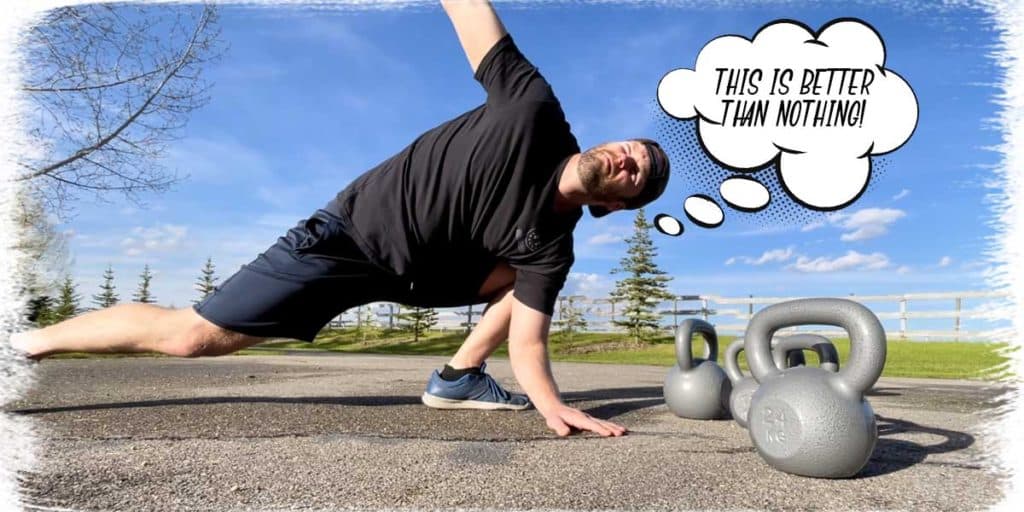
“All or none” thinking is a pretty big trap that many of us fall into when it comes to our attempts to workout at home. I myself am so guilty of this that it’s not even funny.
“All or none” thinking can look like:
“I either need to do ALL of my workout today or it’s not worth doing any of it at all.”
“I need to do my workout with ALL of my intensity or it’s not worth doing at all.”
“I need to do ALL of my workouts or it’s not worth doing any of them at all.”
The problem with any of these thoughts is multiple. But the main one is that it gives you a pretty narrow window to operate within effectively; things essentially either need to be perfect in their entirety to proceed or else working out should be abandoned altogether.
Ask yourself: How often are you really expecting things to be perfect? Are you always going to be filled with energy for your workouts? Hardly. Are you always going to have the full allotted time to get your training session done? Doubtful. Are you always going to be able to get your intended training session completed and not miss a single one? Highly unlikely.
So, if this is the window or the requirements you’re laying down to give yourself the green light when it comes to working out at home, you’re likely setting yourself up for failure.
The solution is to be reasonable with yourself and realize that something is almost always better than nothing. Hence, avoiding the “all or nothing” trap.
If your workout calls for a 30-minute routine, twenty minutes of that routine is a heck of a lot better than nothing at all. So is ten minutes, for that matter.
Performing four of your five exercises is far superior to no exercises completed at all. So does performing three exercises.
Performing two of the three sets for your exercises is, well…you get the point.
Even if it’s only 20% of your intended workout, you’ll still be physically AND mentally better off for it than had you volitionally chosen to do nothing at all.
This action of choosing to complete something over nothing at all is a critical mindset to adopt and one that will play out in the following tips.
Tip 3: Commit to the first ten minutes (the ten-minute barrier)
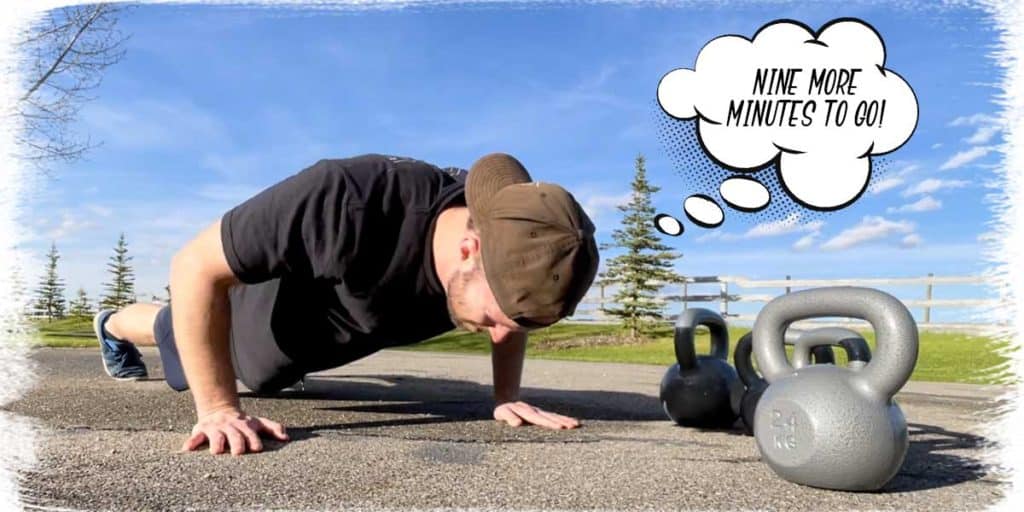
Ask anyone who has been successfully working out or training for a long period of time (at home or in gyms), and they will all tell you that there are plenty of days in which they don’t feel like training or exercising at all.
But if you were to then ask them what the hardest part tends to be on those days, many of them would say “just showing up to the gym” or “getting through the first ten minutes,” and that the workout actually becomes rather manageable thereafter.
Even when working out in my basement, the hardest part of the whole process is the first ten minutes. You would be surprised at how often individuals pick up steam and feel they have the desire to keep on going with the rest of their workout once they get past the ten-minute mark.
Many times it’s a simple matter of getting the mental and physical “engine” fired up and ready to rock. Push through the first ten minutes, and if you’re still not feeling it, bust out tip number 4.
Tip 4: Have a go-to exercise if all else fails
Every now and then, you’re likely going to have a day where even if you’ve pushed through the first ten minutes of exercising or movement, things just don’t improve in terms of your desire to keep ongoing. This stuff happens to even the best of us every once and a while.
I am no exception to this, neither are you. Thankfully, it won’t happen as often as you may be inclined to think, but it does happen to one extent or another.
So if you’ve pushed through the first ten or so minutes of your workout and your engines still haven’t lit up, it may just not be the day to get a workout in (or perhaps you can try later on in the day if time allows).
But, before you shut things down, get ONE exercise done.
It’s important to have a favorite exercise to perform, even on your toughest of training sessions. By performing one exercise, you’re not only giving yourself at least a little bit of physical stimulation (remember, something is better than nothing at all), but you’re also fostering a behavioral pattern or mindset of keeping your mental momentum going.
Related article: Faster Exercise Recovery: How to Remove Lactic Acid After a Workout
Sure, the actual physical benefits might not be much, but the behavioral benefits will be extensive in terms of creating a mindset that keeps you in the habit of at least earnestly attempting home workouts
So, pick an exercise that you enjoy and do it for at least one single set, but ideally for as many sets as you can. Who cares what the exercise is, so long as it’s one you don’t mind doing. Even if you perform it at a lower intensity than what you’d ideally perform it at, remind yourself that doing it at this point is primarily for the behavioral benefits; your mindset will be strengthened in terms of maintaining forward progress, even on your most unmotivated days.
Bonus: The one super quick strategy you have zero excuse for

Barring some sort of sickness or injury, one of my favorite strategies or “hacks,” if you will, on days where I have skipped my home workout altogether, is to remind myself that I have no excuse not to perform the following little action to get some form of home exercise accomplished, no matter how small it may be:
Since I shower every day (hopefully you do as well), and it takes a minute or so for the water in my pipes to heat up to an ideal temperature, there’s no excuse not to perform just one set of any exercise right before you hop in the shower. Or, if your water heats up near-instantly, do the exercise right before turning it on.
It can be pushups, bodyweight squats, abdominal crunches, or anything else you can perform in your bathroom. One set. Maximal reps. Who cares what the exercise is. It can be as short as 20 seconds but shouldn’t take more than a minute or two, tops. Get as many reps as you can, then hop right in the shower and cool off!
No matter how unmotivated you are, you should be able to drum up the mental fortitude to bang out one set of one exercise of your choice, especially when knowing that the shower is waiting for you immediately afterward.
Again, this isn’t so much for physical stimulation (but will certainly involve some, depending on how much you push yourself), but rather for adopting the mindset of not allowing yourself to backslide when it comes to keeping a strong behavior of finding ways to workout at home.
Final thoughts:
Finding the motivation to workout at home can be a challenge, even for the best of us. You won’t always feel like a rockstar, but use the tips within this article to give yourself the best chance possible to make the process as enjoyable and meaningful as possible. This will allow you to improve your consistency and overall sustainability with working out from home.
No matter what, keep giving it your best.
-Jim

Hi! I’m Jim Wittstrom, PT, DPT, CSCS, Pn1.
I am a physical therapist who is passionate about all things pertaining to strength & conditioning, human movement, injury prevention and rehabilitation. I created StrengthResurgence.com in order to help others become stronger and healthier. I also love helping aspiring students and therapists fulfill their dreams of becoming successful in school and within their clinical PT practice. Thanks for checking out my site!

